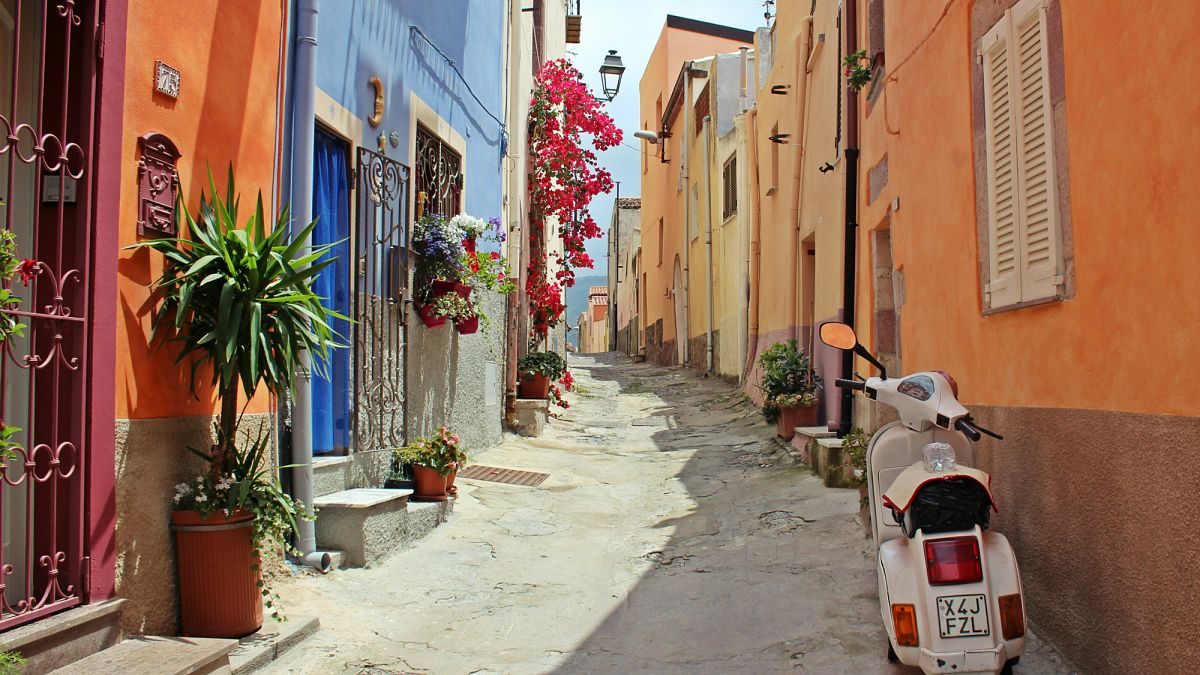Italy’s countryside is peppered with villages rich in architectural marvels, gastronomic delights and arcane cultural traditions.
Each year, these little-known treasures compete for national recognition through ‘Borgo dei Borghi’ (Village of Villages), a beloved television contest that has become a cultural phenomenon.
Organised by RAI, Italy’s national public broadcasting company, the annual competition is broadcast in weekly episodes that turn the spotlight on each of the 20 selected villages.
The programme has become a form of travel inspiration as it recounts legends, curiosities and rituals that make each village one-of-a-kind.
Here are this year’s winners – chosen by viewers and an expert jury of historians and tourism professionals – and why you should add them to your next Italy trip itinerary.
Marvel at Baroque grandeur in Militello in Val di Catania, Sicily
Lying on the northern slopes of the Iblei Mountains, winner Militello in Val di Catania is an exemplar of Sicilian baroque artistry and urban planning.
The village of just under 7,000 inhabitants is included in UNESCO‘s designation of late Baroque towns of the Val di Noto.
Following the devastating earthquake of 1693 that destroyed much of southeastern Sicily, Militello was rebuilt according to the baroque aesthetic principles of the era, resulting in an urban landscape that feels like an open-air museum of 18th-century design.
The village is home to more than 20 churches with elaborate stone facades crowded with cherubs, saints, and intricate floral motifs.
Militello is also home to numerous aristocratic villas and palaces that once housed the noble families who shaped the village’s development.
The village‘s cultural life is also abundant, with saints’ day festivals involving processions, traditional music performances, and communal meals.
Militello’s victory marks Sicily’s fifth triumph in the Borgo dei Borghi competition, following previous wins by Gangi, Montalbano Elicona, Sambuca di Sicilia, and Petralia Soprana.
Explore the palatial castle of Agliè, Piedmont
Heading up to the northern province of Turin, runner-up Agliè is characterised by both aristocratic grandeur and quotidian village life.
The centrepiece is the Castello di Agliè, a palatial complex that forms part of UNESCO’s Savoy Residences designation.
The magnificent structure of imposing facades, elaborate gardens, and richly decorated interiors served as one of the primary residences of the House of Savoy, the royal family that ruled the Kingdom of Sardinia and later the unified Kingdom of Italy.
The castle forms the heart of the village, surrounded by historic piazzas that are still the setting for weekly markets, seasonal festivals, and daily social interactions.
The village gained additional fame as the primary filming location for ‘Elisa di Rivombrosa’, a popular Italian historical drama series.
Discover ancient winemaking in Vignanello, Lazio
Third spot went to Vignanello, which exemplifies the sophisticated architectural and agricultural traditions of northern Lazio.
The village’s claim to fame rests primarily on the Castello Ruspoli, a Renaissance masterpiece whose gardens represent some of the finest examples of Italian landscape design from the 16th and 17th centuries.
Vignanello is also renowned for its time-honoured winemaking traditions. The volcanic soils of the region, enriched by centuries of natural mineral deposits, provide ideal conditions for viticulture.
The annual grape harvest festival is a grand celebration for the village, featuring wine tastings and food pairings as well as historical reenactments.
Explore at wild national park from Aieta, Calabria
High in the mountains of Calabria, Aieta lies in the untamed wilderness of the Pollino National Park.
At over 500 metres of elevation, the medieval village commands lofty views over the Tyrrhenian Sea – its name is appropriately derived from the Greek word for eagle.
Aieta’s medieval character remains remarkably intact, with narrow stone streets winding between houses built from local stone.
The village’s 16th-century Renaissance palace stands as a testament to the wealth and cultural sophistication that even small mountain communities could achieve during Italy’s golden age of art and architecture.
The location within Pollino National Park makes Aieta an ideal base for exploring its ancient forests, deep gorges carved by rushing streams, and mountain peaks that provide habitat for rare wildlife, including wolves, eagles, and endemic plants.
Find peace among lemon groves in Maiori, Campania
While the Amalfi Coast attracts millions of visitors annually to its famous destinations like Positano and Amalfi, Maiori offers a more tranquil alternative.
The village has an expansive beach, unusual along a coastline typically characterised by small coves and dramatic cliffs.
Behind the sweep of sand rise the village’s colourful buildings and lemon groves that climb the steep hillsides threaded through with hiking routes.
Visit the Abbey of Santa Maria de Olearia, a remarkable religious complex carved directly into the coastal rock face. Inside are frescoed chapels and meditation spaces hewn directly from the cliff.
Maiori’s lemon groves represent not just agricultural activity but a cultural tradition that has shaped the landscape and economy of the Amalfi Coast for centuries.
These terraced gardens, supported by stone walls built without mortar, are an extraordinary example of sustainable agriculture that maximises productivity while preserving the natural beauty of the steep coastal terrain.












